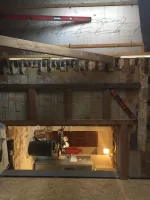richard pitman
New Member
Working on quite a large project and have a timber frame joining a solid wall along the same line. Was going to batten the solid and then board across both but worried the frame may settle and obviously the wall won't so might crack?
Any ideas if this would happen and if so how to proceed?
Thanks

